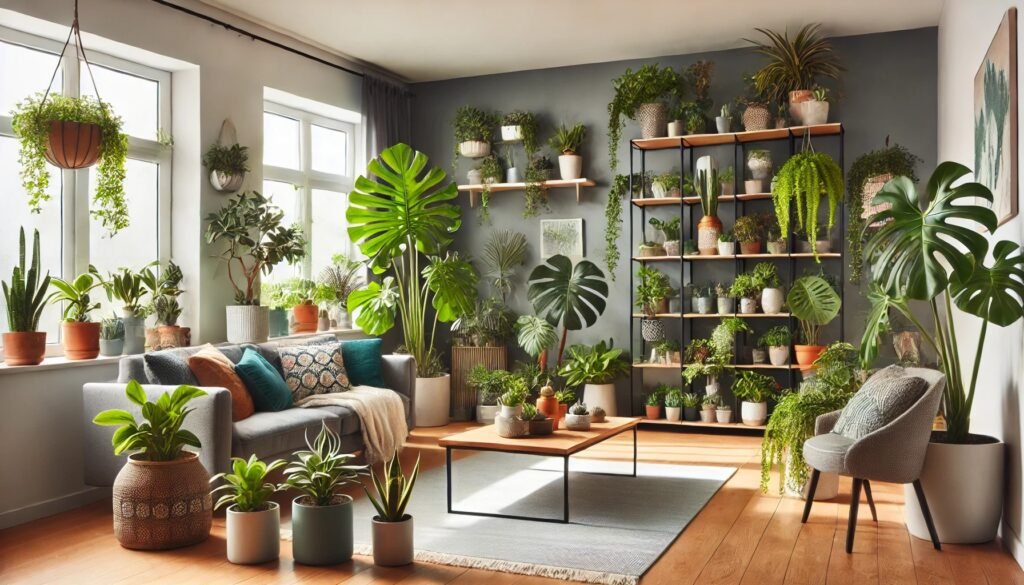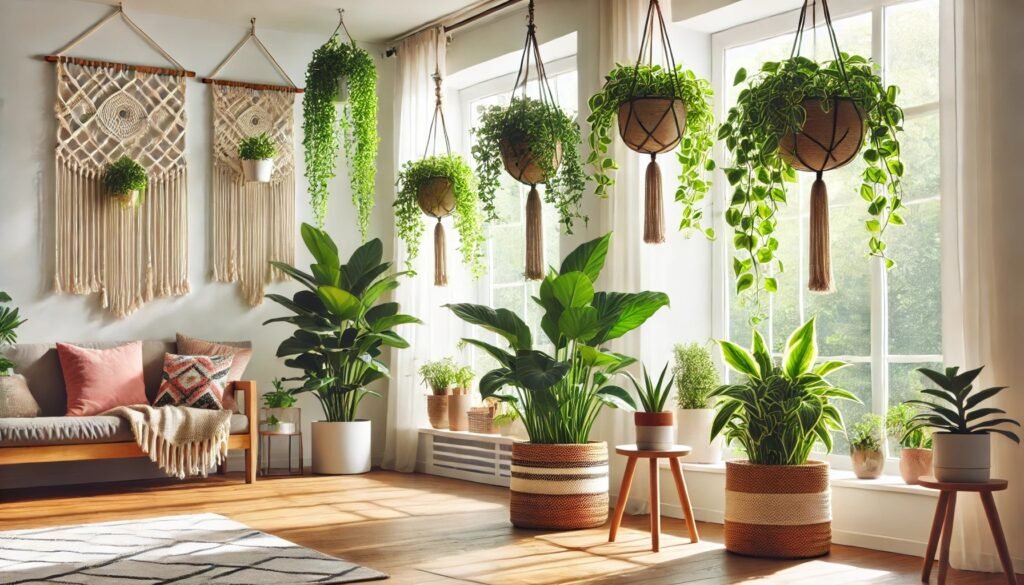
When it comes to indoor gardening, we often focus on light, water, and the beauty of our plants. However, the soil beneath our plants is just as crucial, if not more so. Healthy soil is the foundation of thriving indoor plants, providing them with the nutrients, structure, and support they need. Let’s dive into the secret life of soil and explore how to ensure it supports your indoor garden effectively.
Understanding Soil Health
Healthy soil is more than just dirt; it’s a living ecosystem. It’s teeming with life, from tiny microorganisms to essential minerals. This complex system works together to nourish your plants, helping them grow strong and resilient. When soil health is compromised, plants struggle, becoming more susceptible to disease, pests, and poor growth.
What Makes Soil Healthy?
Healthy soil is well-balanced. It contains a mixture of organic matter, minerals, air, and water. Organic matter, such as decomposed leaves and compost, enriches the soil with nutrients. Minerals like nitrogen, phosphorus, and potassium are vital for plant growth. Air pockets within the soil allow roots to breathe, while moisture ensures they remain hydrated.
The balance of these components is key. Too much water can lead to root rot, while compacted soil can suffocate roots. Conversely, nutrient-poor soil leaves plants starving for essential elements.
Common Soil Problems and Solutions
Indoor plants often face unique soil challenges. Unlike outdoor gardens, where nature can rejuvenate the soil, indoor plants rely entirely on you. Let’s look at some common soil problems and how to fix them.
Compacted Soil
Over time, soil in pots can become compacted. This reduces air pockets, making it difficult for roots to grow and breathe. You might notice your plants aren’t thriving or that water pools on the surface instead of soaking in.
To address this, gently loosen the soil around your plant’s roots. You can use a small tool like a chopstick to break up the compacted areas. If compaction is severe, consider repotting your plant with fresh, well-aerated soil.
Poor Drainage
Good drainage is vital for indoor plants. Soil that doesn’t drain well can lead to waterlogged roots and eventually root rot. If your plant’s pot doesn’t have drainage holes, this could be the culprit. Ensure your pots have adequate drainage, and use a well-draining soil mix. Adding perlite or sand to your soil can improve drainage.
Nutrient Deficiencies
Indoor plants can quickly deplete the nutrients in their soil. If your plant shows signs of yellowing leaves, stunted growth, or weak stems, it might be time to feed them. Use a balanced, water-soluble fertilizer to replenish essential nutrients. Regularly refreshing the top layer of soil with compost or organic matter can also help maintain soil fertility.
Choosing the Right Soil for Indoor Plants
Not all indoor plants have the same soil needs. Some prefer a loose, sandy mix, while others thrive in richer, loamy soil. Choosing the right soil is crucial to your plant’s success.
Understanding Different Soil Types
Different plants thrive in different soil conditions. Succulents, for example, need soil that drains quickly, preventing water from sitting around their roots. A cactus mix, which typically includes sand and perlite, is perfect for these plants.
On the other hand, ferns and tropical plants prefer a richer, more moisture-retentive soil. A mix containing peat moss and compost is ideal for these moisture-loving plants. Always check your plant’s specific soil requirements before potting.
Mixing Your Own Soil
Creating your own soil mix can be rewarding and allows you to tailor it to your plant’s needs. Start with a base of potting soil, then add amendments like perlite for drainage, peat moss for moisture retention, or compost for added nutrients. Experimenting with different ratios can help you find the perfect mix for your indoor garden.
The Role of Soil Microorganisms

You might not see them, but your soil is alive with microorganisms. These tiny creatures, including bacteria, fungi, and earthworms, play a significant role in maintaining soil health. They break down organic matter, releasing nutrients that your plants can absorb.
Beneficial Bacteria and Fungi
Beneficial bacteria help decompose organic material, turning it into nutrients. Mycorrhizal fungi form a symbiotic relationship with plant roots, extending their reach and improving nutrient and water absorption. Together, these microorganisms create a thriving underground network that supports plant health.
Encouraging Microbial Activity
To encourage microbial activity in your soil, consider adding organic matter like compost or worm castings. These provide food for the microorganisms, keeping them active and beneficial. Avoid using chemical fertilizers and pesticides, as these can harm the delicate balance of soil life.
Repotting and Soil Renewal
Even with the best care, soil can become depleted over time. Repotting your plants is essential to refresh their environment and provide them with fresh nutrients.
When to Repot
Signs that your plant needs repotting include roots growing out of the drainage holes, soil that dries out too quickly, or stunted growth. Spring is an ideal time to repot, as plants are entering their growing season and can recover quickly.
How to Repot
Choose a pot that’s one size larger than the current one. Gently remove the plant from its old pot, being careful not to damage the roots. Shake off the old soil, and trim any dead or rotting roots. Place the plant in its new pot, adding fresh soil around the roots. Water thoroughly to help the soil settle.
DIY Soil Testing and Maintenance

Maintaining healthy soil requires regular testing and adjustments. Fortunately, you don’t need a lab to test your soil; simple DIY methods can give you a good idea of your soil’s condition.
Testing Soil Drainage
To test your soil’s drainage, dig a small hole in the pot and fill it with water. If the water drains away within a few minutes, your soil has good drainage. If it sits on the surface, you may need to amend the soil with sand or perlite.
Checking Soil pH
Most indoor plants prefer slightly acidic to neutral soil (pH 6-7). You can test soil pH with a simple kit available at garden centers. If your soil is too acidic, add lime to raise the pH. If it’s too alkaline, sulfur can lower it.
Ongoing Soil Care
Regularly top-dressing your plants with compost or organic mulch can help maintain soil health. This practice adds nutrients and improves moisture retention. Avoid over-fertilizing, as this can lead to nutrient imbalances and harm soil life.
Final Thoughts
Healthy soil is the foundation of a thriving indoor garden. By understanding the components of soil health, addressing common issues, and providing the right environment for your plants, you can ensure they grow strong and beautiful. Remember, your plants depend on you to create the best possible home for their roots. With a little care and attention, your indoor garden will flourish from the ground up.
Stay connected with the world of plants! Subscribe to Phylofy for expert gardening tips, DIY projects, and eco-friendly inspiration. Join our community and nurture your love for nature. Don’t miss exclusive content and updates. Subscribe now!



